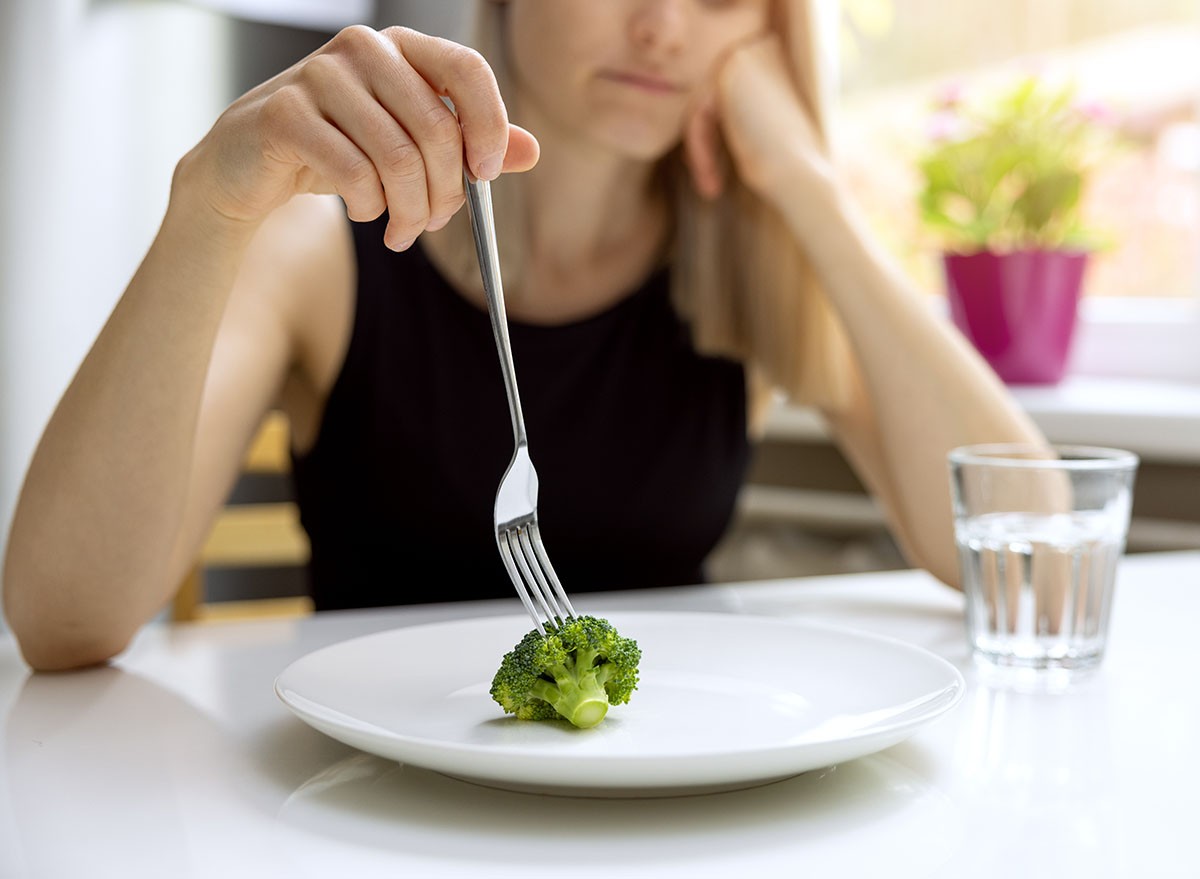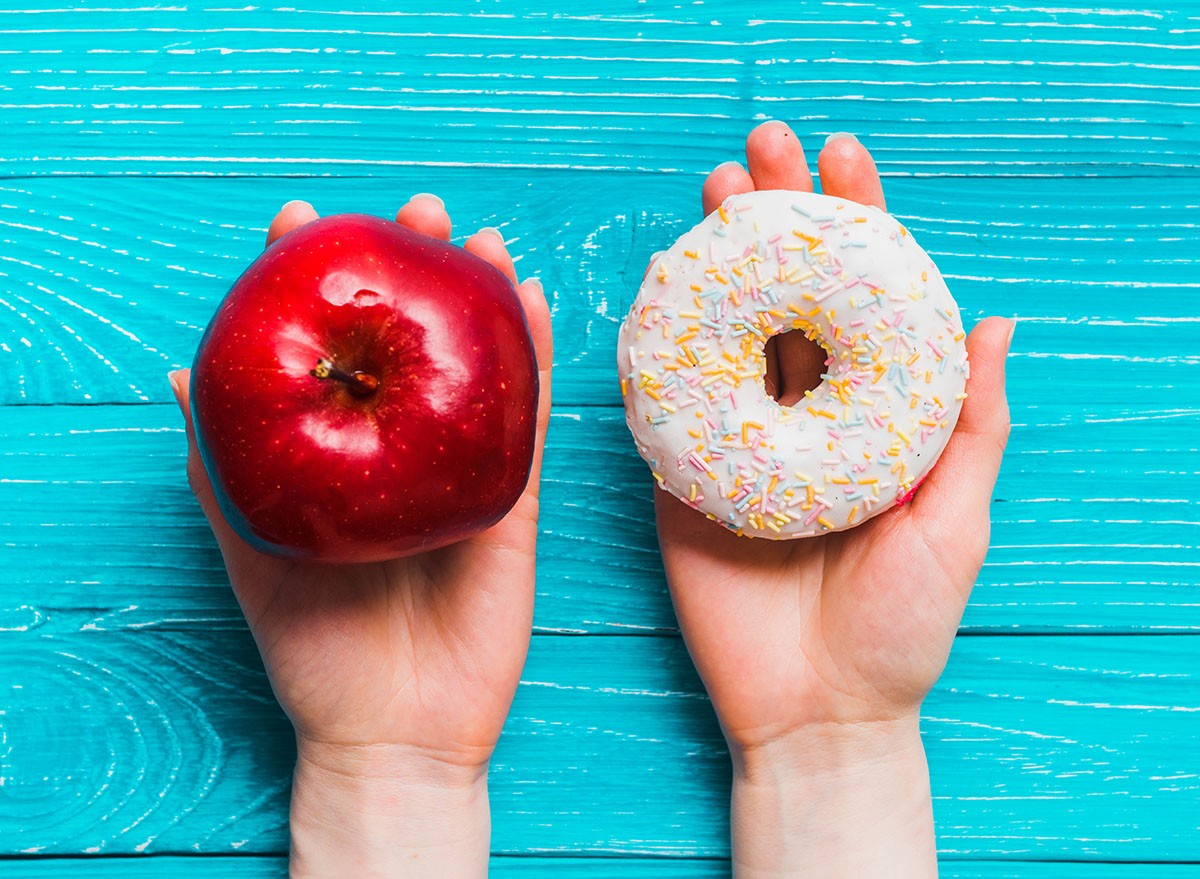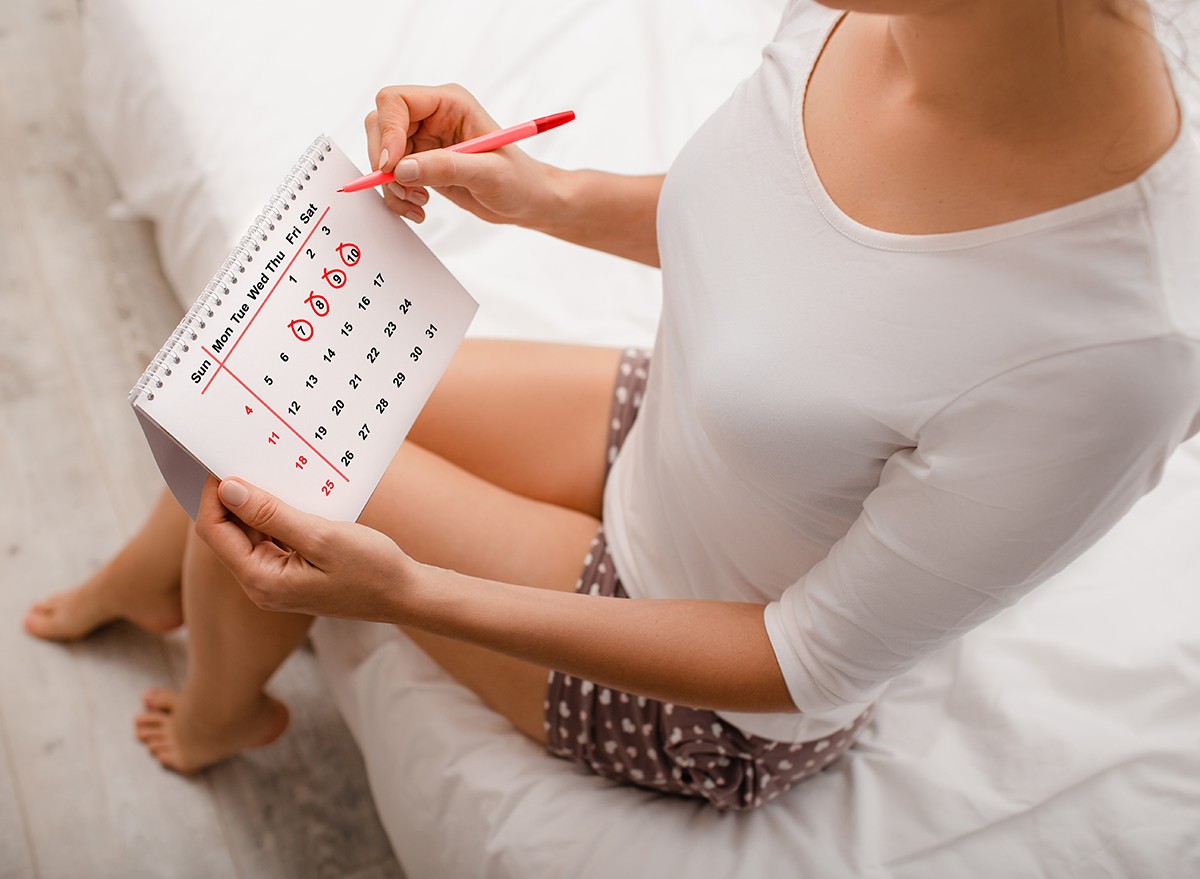The 2 Biggest Mistakes People Make After Stopping Ozempic, According to a Nurse Who Prescribes It

Are you about to go off Ozempic or another GLP-1 weight loss drug? Don't make a common mistake that could lead to weight gain. Stephanie Porter is an aesthetic nurse practitioner who prescribes GLP-1 weight loss drugs to her patients. In a new social media post, she reveals two mistakes people make when they go off Ozempic. "Two guaranteed ways to ruin your progress after Ozempic or Mounjaro," she writes.
Eating Healthy Alone Won't Save You After You Go Off Weight-Loss Drugs.
She explains why "eating healthy" alone "won't save you" after GLP-1s. "Let's break it down: GLP-1 medications lower your appetite and change how your body regulates hunger. When you stop the medication without a structured plan, your natural hunger signals come rushing back and most people aren't ready for it. That's where two common mistakes happen," she says.
Mistake One: Continuing to Eat Very Small Portion

The first mistake? Continuing to eat very small portions. "Without medication suppressing appetite, your body will naturally demand more food. Tiny meals no longer satisfy you, leading to frustration, intense cravings, and rapid weight regain," she says.
Mistake Two: Relying Solely on Good Habits

Mistake two? Relying solely on "good habits," she says. "While healthy habits are important, they aren't enough if your metabolism hasn't been rebuilt to handle normal hunger and higher calorie intake."
Here's the Solution

"Before you stop or lower your GLP-1 dose, you must strategically rebuild your metabolism," she says. Do this by: "Gradually increase calories (even adding back enjoyable foods). This is called REVERSE DIETING!" she writes. "Re-establish healthy hunger and fullness cues. Create a new maintenance level that your body can sustain without medication."
Have a Plan

"Important: The biggest mistake is waiting until you're already struggling. Having a plan before you transition off meds makes all the difference," she concludes. And if you enjoyed this article, don't miss 20 Incredible Ozempic Success Stories of All Time.




